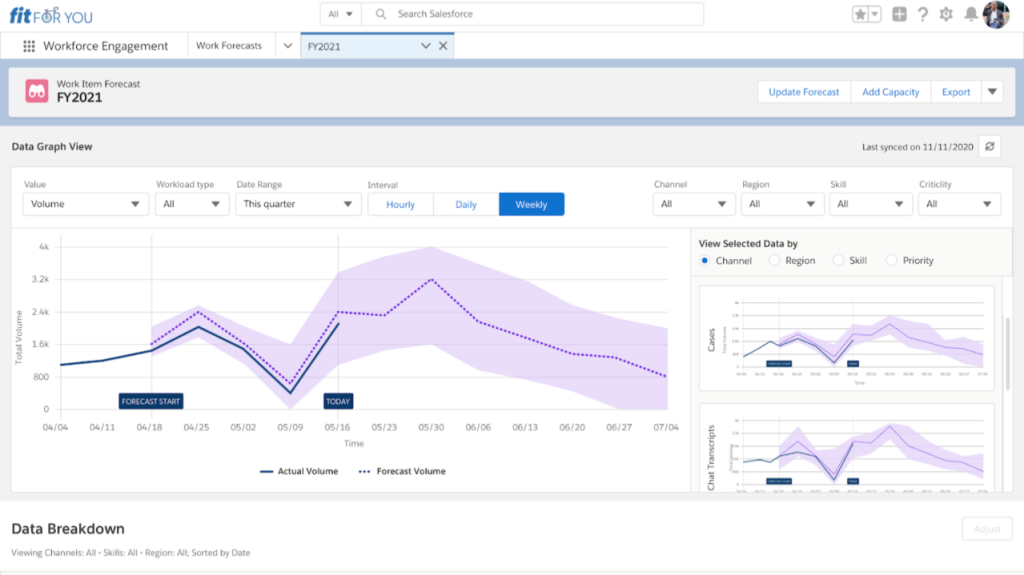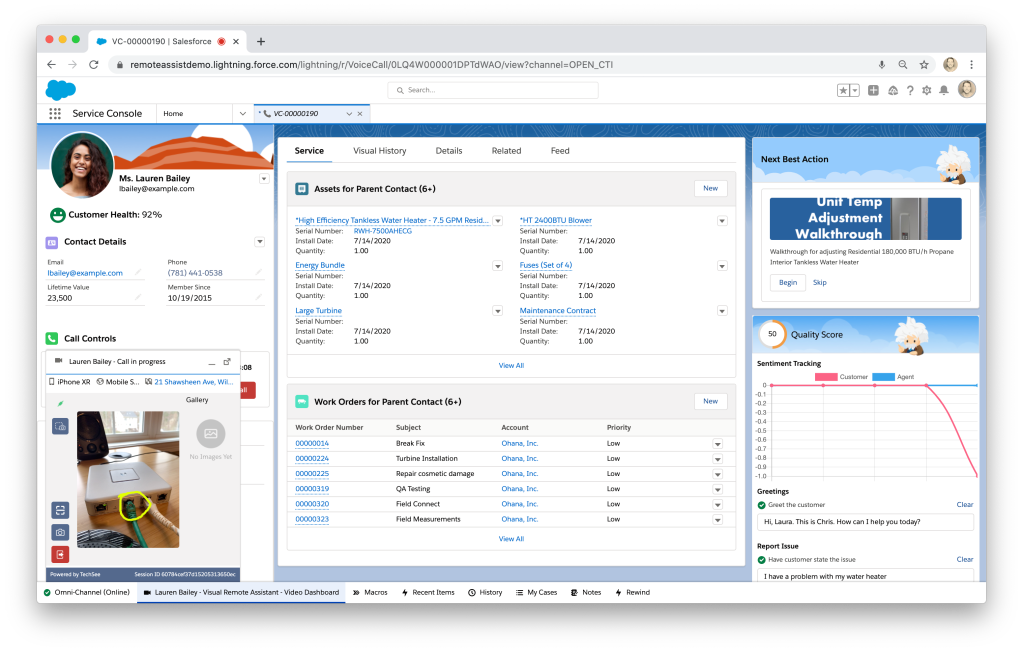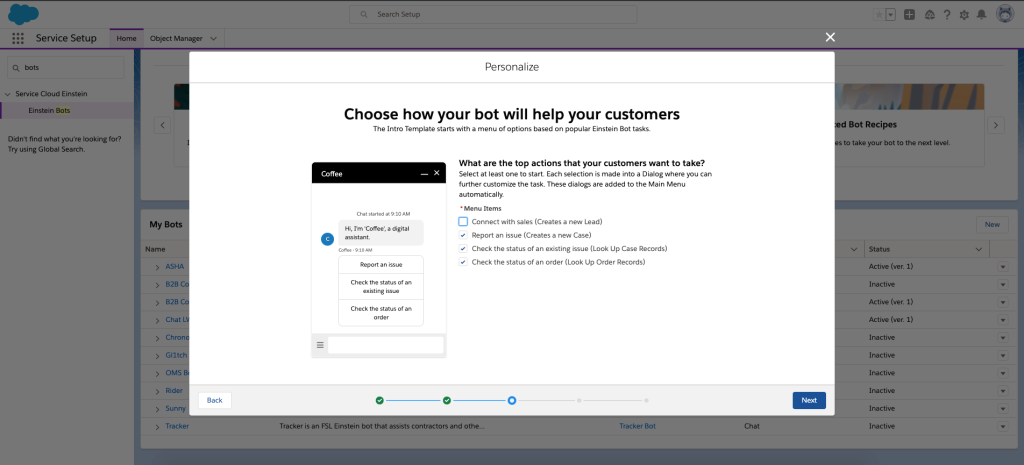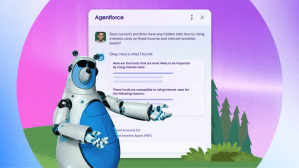Service Cloud Workforce Engagement, available globally in June, helps customer service teams unify their people, planning and process to accurately route cases to the right agents with the right skills at the right time.
In 2020, customer service contact centers underwent dramatic change. Agents started working from home, customers increasingly turned to digital channels, and many industries saw surging demand for service. More than ever, businesses faced pressure to have the right agents readily available to help customers when they needed support the most.
As the landscape of the pandemic shifts, the future structure of the contact center is uncertain. But the goal remains clear: provide unimpeded service with highly qualified agents.
Service Cloud Workforce Engagement, Salesforce’s dynamic workforce planning product, is helping service leaders do just that. Melissa Matross, SVP of Product Management, sat down with one of them — and he happens to work just down the virtual hall. Jim Roth, EVP of Customer Support at Salesforce, has been using the product with his own team and shares what it’s been like to serve as the first customer for this transformative product.
Melissa: How has your team been involved in shaping Service Cloud Workforce Engagement?
Jim: We were looking for a workforce management solution when we learned that Salesforce was planning to build one. We got to shape the vision from the beginning, weighing in on the features that matter most to service leaders.
For the past year or so, we’ve been giving feedback along the way and pilot testing the product’s capabilities. I’m really excited about the ability to combine demand forecasting, shift scheduling, case routing, and agent training in a single integrated platform — that’s never existed before.
Melissa: Tell us a bit about your customer support team and what has changed over the past year amid the pandemic.
Jim: Our team of support engineers around the world support Salesforce products in 11 languages, 24 hours a day, seven days a week. Customers can reach us by phone, chat online support requests, and we also offer a ton of self-service resources.
We closed our physical offices in March 2020 in response to the pandemic. Before that time, only 216 of our agents worked from home.
“In just over two weeks, we moved around 2,800 support engineers from around the globe to a work from home setting.”
Jim Roth, EVP of Customer Support, Salesforce
In just over two weeks, we moved around 2,800 support engineers from around the globe to a work from home setting. We faced the same challenges that many other companies did during the process, including making sure agents had the right equipment and connectivity. It took a lot of long days to execute, but the fact that all our applications were cloud-based really helped.
Melissa: Did you need to make any changes to how you staff your channels?
Jim: One of the biggest transformations we saw over the past year was a rapid increase in demand for live agent chat with our team. A year ago, chat was just over 7% of our case volume. Now, it’s nearly 16%. We knew there was latent demand for this channel with customers — especially with people increasingly preferring digital channels these days — so we made it more accessible and expanded it to additional products.
When someone sends you an email or fills out a web form, you generally have 4 to 48 hours to respond. With that kind of asynchronous channel, it doesn’t matter much what time an agent starts work or when in their day they handle that query.
With live chat, people expect a response in minutes, if not seconds. It matters whether an agent comes in at 8 a.m. or 8:15 a.m. With more emphasis on synchronous channels, scheduling resources for individual agents has now become a critical capability.
“Today, most companies schedule work in silos by channel. The power of the Workforce Engagement product comes from using a unified but flexible set of logic to forecast, plan and schedule across all channels, from voice to chat to email and beyond.”
Jim Roth, EVP of Customer Support, Salesforce
That’s one reason we’re so excited about omnichannel planning on the Workforce Engagement platform. Today, most companies schedule work in silos by channel. The power of the Workforce Engagement product comes from using a unified but flexible set of logic to forecast, plan and schedule across all channels, from voice to chat to email and beyond. The platform allows you to overlay arrival patterns, service requirements and capacity models for all these cases for true omnichannel shift scheduling, which has long been an unmet need in the industry.
Melissa: As the first customer in our Workforce Engagement pilot, what features excite you the most?
Jim: The Workforce Engagement product gives you visibility across all channels, so you can actually allocate capacity and staff agents across every channel and product seamlessly, instead of doing things manually or in separate teams. You can dynamically manage an omnichannel workforce easily from anywhere, matching the ideal skill and channel with the customer’s needs at just the right time. Automation with artificial intelligence (AI) can come in to optimize capacity planning of your service team, improving the experience for both agents and customers. There’s so much power in tying everything together in one platform for the entire lifecycle, from forecasting to training.
Speaking of training, I’m also excited about the platform’s ability to provide personalized real-time call center coaching and on-demand training anywhere through myTrailhead, Salesforce’s online learning platform. Arrival patterns are random, and you don’t know when exactly an agent will be idle or busy.
Traditionally, when we have an eight hour training class for our agents we take them out of the queue for all eight hours. The Workforce Engagement platform lets you divide the eight hour class into bite-sized chunks on Trailhead and deliver the training during agent idle time, which is good for customers and good for our utilization.
Melissa: What lessons have you learned over the past year that other support centers could benefit from?
Jim: Flexibility is your friend. No one saw the pandemic coming, and no one expected Texas to have a power outage earlier this year.
Whatever is around the corner, support centers that have built-in flexibility are likely to weather it best. That means self-service to help customers scale operations. It means having more apps in the cloud. It means having agents empowered with laptops and robust connectivity. It means cross-training agents to handle every product and channel. And critically, it means having a workforce engagement platform that lets you forecast, plan and schedule across channels in an omnichannel way.
“No one saw the pandemic coming, and no one expected Texas to have a power outage earlier this year. Whatever is around the corner, support centers that have built-in flexibility are likely to weather it best.”
Jim Roth, EVP of Customer Support, Salesforce
I’m excited to see all of that come to life in the Workforce Engagement platform.























